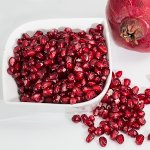Shab-e Yalda Date in the current year: December 21, 2026
 In many cultures, the winter solstice is considered as a special moment of the annual cycle, and there are a lot of holidays that coincide, or used to coincide, with the winter solstice day, from Christmas and its predecessors, such as the Germanic Yule festival, to Shab-e Yalda, an Iranian festival marking the longest and darkest night of the year.
In many cultures, the winter solstice is considered as a special moment of the annual cycle, and there are a lot of holidays that coincide, or used to coincide, with the winter solstice day, from Christmas and its predecessors, such as the Germanic Yule festival, to Shab-e Yalda, an Iranian festival marking the longest and darkest night of the year.Shab-e Yalda, also known as Shab-e Chelleh, is an Iranian winter solstice festival celebrated around the winter solstice in the Northern Hemisphere. In the Solar Hijri calendar (the official civil calendar of Iran), it falls on the night between the last day of the 9th month (Azar) and the first day of the 10th month (Dey). Azar is the last month of autumn and Dey is the first month of spring, meaning that Shab-e Yalda marks the change of seasons.
Shab-e Yalda is originally a Zoroastrian custom meant to protect people from Ahriman (the incarnation of evil in Zoroastrianism) and the daevas (malevolent forces) on the most inauspicious night of the year. According to tradition, people were advised to stay awake all night or most of it to protect themselves from misfortune. So they gathered with family and friends, shared the last fruits from this year’s harvest, and passed the long night together. The following day was a day of gratitude and celebration.
The religious significance of the tradition has been lost since the introduction of Islam, but the tradition of staying up late during the longest night of the year and having a good time in the company of friends and relatives is still a part of Iranian culture. On the night of Shab-e Yalda, Iranian families gather together and spend the night eating, drinking and reading poetry (especially Hafez, whose works are regarded as a pinnacle of Persian literature).
Fresh and dried fruit, nuts and sweets play a central role in the present-day celebrations of Shab-e Yalda. Pomegranates and watermelons are considered particularly significant, since their color is associated with dawn after the darkest night and new life. They are placed on a korsi (a type of low table), which people sit around.
In some areas, there is a tradition to serve forty different foods during the Shab-e Yalda ceremony! Some of traditional foods have light-hearted superstitions associated with them. For example, watermelons are believed to ensure one’s health and well-being during the hot months of summer, garlic supposedly prevents joint pain, and consuming pomegranates, pears, carrots and green olives protects one from insect bites and stings.
Common festive activities include telling stories, anecdotes and jokes, drinking, conversation, reciting poetry, dancing, and even using Hafez’s poems for divination. Although there is a ban on alcohol in Islam, many people serve homemade alcoholic drinks.
Outside Iran, Shab-e Yalda is celebrated by Iranian peoples in Azerbaijan, Afghanistan, Iraqi Kurdistan, Tajikistan, and Turkey.
- Category
- Folk Festivals
- Country
- Iran
- Tags
- Shab-e Yalda, Shab-e Chelleh, Iranian festival, Zoroastrian custom, folk festival